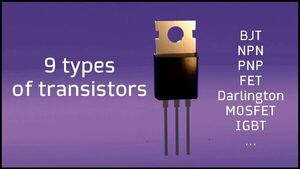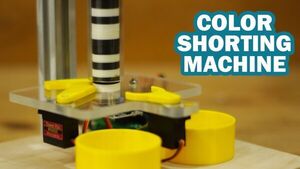2022-03-24 - Nº 360
Editorial
Esta é a Newsletter Nº 360 que se apresenta com o mesmo formato que as anteriores. Se gostar da Newsletter partilhe-a!
Todas as Newsletters encontram-se indexadas no link.
Esta Newsletter tem os seguintes tópicos:
Faz hoje anos que nascia, em 1693, o horólogo inglês John Harrison. Ele inventou o primeiro cronómetro marinho prático, que permitiu aos navegadores calcular com precisão a sua longitude no mar. Ele foi levado a iniciar este trabalho após uma enorme recompensa oferecida pelo governo britânico por novos instrumentos de navegação para evitar mais desastres no mar. John Harrison assumiu o estabelecimento científico e académico do seu tempo e ganhou o prémio da longitude através de extraordinária perspicácia mecânica, talento e determinação.
Faz também hoje anos que nascia, em 1809, o matemático francês Joseph Liouville. Ele descobriu números transcendentais (aqueles que não são as raízes das equações algébricas com coeficientes racionais), e que há infinitamente muitos deles. Também trabalhou em análise real e complexa, teoria dos números e geometria diferencial. O seu nome é recordado na teoria de Sturm-Liouville das equações diferenciais que generaliza as ideias de Joseph Fourier, e são importantes na física matemática. Ele estudou mecânica celestial. Liouville fundou em 1836, e editou durante quase quatro décadas, o Journal de Mathématique, que continua a ser uma importante publicação matemática francesa. Editou e publicou (1843) os manuscritos deixados para trás após a morte prematura de Evariste Galois 22 anos antes.
Faz igualmente hoje anos que nascia, em 1820, o físico francês Edmond Becquerel. Ele era filho do químico Antoine-César Becquerel e pai do físico Henri Becquerel (que descobriu a radioactividade). O seu próprio trabalho experimental foi feito em electricidade, ótica e magnetismo. Mediu as propriedades das correntes eléctricas, como estas surgem, e descobriu (1840) correntes eléctricas em certas reacções químicas iniciadas pela luz. Estudou o diamagnetismo (1845-46). Em 1855, descobriu que o simples deslocamento de um condutor metálico num líquido produziria alguma corrente eléctrica. Inventou o fosforoscópio para medir a curta duração da fosforescência dos materiais após exposição à luz brilhante, e foi também capaz de examinar o espectro da luz que emanava dos corpos luminescentes.
Faz também hoje anos que nascia, em 1835, o físico austríaco Josef Stefan. Ele propôs uma lei de radiação (1879) afirmando que a quantidade de energia radiada por segundo de um corpo negro é proporcional à quarta potência da sua temperatura absoluta. (Um corpo negro é um objecto teórico que absorve toda a radiação que cai sobre ele). Esta lei é conhecida como a lei de Stefan ou a lei de Stefan-Bolzmann. Ele também estudou a electricidade, a teoria cinética dos gases e a hidrodinâmica.
Faz igualmente hoje anos que nascia, em 1884, o químico físico holandês-americano Peter Debye. Ele recebeu o Prémio Nobel da Química de 1936 pelas suas investigações de momentos dipolo, raios X, e dispersão de luz em gases. A maior parte do seu trabalho foi em química-física com especial interesse na análise de electrólitos e de momentos dipolares. Ele estabeleceu uma teoria de calor específico com algumas melhorias em relação à proposta por Einstein. Debye realizou um trabalho importante na análise de pós cristalinos utilizando técnicas de difracção de raios X. Ele também determinou as dimensões das moléculas gasosas e as distâncias interatómicas usando raios X.
Faz também hoje anos que nascia, em 1893, o astrónomo germano-americano Walter Baade. Ele, com Fritz Zwicky, propôs que as supernovas pudessem produzir raios cósmicos e estrelas de neutrões (1934), e Baade fez extensos estudos sobre a Nebulosa do Caranguejo e a sua estrela central. Durante os apagões da II Guerra Mundial na área de Los Angeles, Baade utilizou pela primeira vez o telescópio Hooker de 100 polegadas para resolver estrelas na região central da Galáxia de Andrómeda. Isto levou à sua definição de duas populações estelares, à percepção de que existiam dois tipos de estrelas variáveis do Cepheid, e a partir daí a uma duplicação da escala assumida do universo. Baade e Rudolph Minkowski identificaram e tomaram espectrogramas de contrapartidas ópticas de muitas das primeiras fontes de rádio descobertas, incluindo Cygnus A e Cassiopeia A.
Faz igualmente hoje anos que nascia, em 1903, o bioquímico alemão Adolf Butenandt. Ele recebeu (com Leopold Ruzicka) o Prémio Nobel da Química de 1939 pelo trabalho pioneiro (1929-34) sobre as hormonas sexuais, principalmente o isolamento do estrone (uma hormona que influencia o desenvolvimento do tracto reprodutivo feminino). Embora forçado pelo governo nazi a recusar o prémio, pôde aceitar a honra em 1949.
Faz também hoje anos que nascia, em 1917, o bioquímico inglês John Kendrew. Ele partilhou o Prémio Nobel da Química de 1962 (com o colega Max Ferdinand Perutz) "pelos seus estudos sobre as estruturas das proteínas globulares". Perutz tinha determinado a estrutura da hemoglobina. Kendrew determinou a estrutura da mioglobina da proteína muscular, que armazena oxigénio e o dá às células musculares quando necessário.
Por fim, faz hoje anos que nascia, em 1941, o radioastrónomo e físico americano Joseph Hooton Taylor Jr.. Ele partilhou (com Russell A. Hulse) o Prémio Nobel da Física de 1993 pela sua descoberta conjunta do primeiro pulsar binário (1974). Este fenómeno único, duas estrelas orbitando-se uma à outra - uma delas emitindo regularmente "bipes" de radiofrequência - tem sido importante como campo de prova do espaço profundo para a teoria geral da relatividade de Einstein. O seu grupo de investigação em Princeton utilizou o radiotelescópio de 1000 pés em Arecibo, Porto Rico, o maior e mais sensível do mundo para captar ondas de rádio do espaço.
Nesta semana que passou foi lançada a versão 5.17 do Kernel de Linux. Chega uma semana mais tarde do que inicialmente previsto, e apresenta uma grande colecção de alterações, melhorias, melhorias de desempenho, e todas as correcções de segurança importantes. Entre as características do kernel do Linux 5.17 está um novo driver AMD P-State (para hardware compatível, ou seja, Zen 2 e mais recente, basicamente). Foi introduzido o Universal Stylus Initiative (USI), suporte para varios teclados Apple Magic 2021 e para dispositivos NZXT. OS filesystems BTRFS e EXT4 ganharam desempenho e ainda foram acrescentados suporte de sanitização para o ARM64, suporte de virtualização KVM para o Intel AMX e suporte virtual Xen USB para guests Xen. Finalmente foi adicionado suporte para o PFRUT (platform firmware runtime update) que permitirá fazer updates de firmware de alguns dispositivos sem reiniciar o sistema.
Na Newsletter desta semana apresentamos diversas noticias, artigos científicos, projetos de maker e alguns vídeos interessantes. É apresentado o livro "ANALOG SEEKrets" e a revista Hackspace Magazine nº53 de Abril.
 João Alves ([email protected])
João Alves ([email protected])
O conteúdo da Newsletter encontra-se sob a licença  Creative Commons Attribution-NonCommercial-ShareAlike 4.0 International License.
Creative Commons Attribution-NonCommercial-ShareAlike 4.0 International License.
Novidades da Semana

Linux Kernel 5.17 Released, This is What’s News
"Linux 5.17 arrives a week later than initially planned, and features a canny crop of changes, improvements, performance enhancements, and all-important security fixes. Linus Torvalds, announcing the release on the Linux Kernel Mailing List, says the one-week delay (to account for lately-revealed security issues) meant “…we did get a few last-minute reverts and fixes in and avoid some brown-paper bugs that would otherwise have been stable fodder, so it’s all good.” So what’s new? Linux Kernel 5.17 Features Chief among the features baked in to the Linux 5.17 kernel is a new AMD P-State driver (for compatible hardware, i.e. Zen 2 and newer, basically). Valve is said to have helped in the creation of this driver (thanks to Steam Deck handheld gaming PC) and it promises to offer better power efficiency than the standard ACPI CPUFreq driver. There is, as always, a fresh dollop of support fornext-generation processors from both AMD and Intel, as well as enablement work to support Intel’s upcoming Alchemist graphics cards." [...]
Outras Notícias

NASA’s Perseverance Rover Hightails It to Martian Delta
"The rover’s self-driving capabilities will be put to the test this month as it begins a record-breaking series of sprints to its next sampling location. NASA’s Perseverance Mars rover is trying to cover more distance in a single month than any rover before it – and it’s doing so using artificial intelligence. On the path ahead are sandpits, craters, and fields of sharp rocks that the rover will have to navigate around on its own. At the end of the 3-mile (5-kilometer) journey, which began March 14, 2022, Perseverance will reach an ancient river delta within Jezero Crater, where a lake existed billions of years ago. This delta is one of the best locations on Mars for the rover to look for signs of past microscopic life. Using a drill on the end of its robotic arm and a complex sample collection system in its belly, Perseverance is collecting rock cores for return to Earth – the first part of the Mars Sample Return campaign." [...]

Advanced Electrothermal models from Nexperia cover entire MOSFET operating temperature range
"Nexperia, the expert in essential semiconductors, today announced the release of new, enhanced Electrothermal models for its MOSFET devices. Semiconductor manufacturers commonly provide simulation models for their MOSFETs, but these usually only include a limited number of device parameters which have been modelled at typical operating temperatures. Nexperia’s new advanced models capture the thermal interdependency of the complete set of device parameters right across the full operating temperature range from -55 °C to 175 °C. Overall accuracy is further enhanced by the inclusion of reverse diode recovery time and device electromagnetic compatibility (EMC) performance in these advanced models. These enable engineers to create accurate circuit and system level simulations and assess the electrical, thermal and EMC performance before committing to build a prototype. These models also help save time and resources because engineers, who were previously required to ensure that their designs could operate under (unlikely) worst-case conditions, can now simulate their designs across specific temperatures ranges." [...]
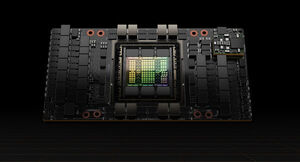
NVIDIA Hopper GPU Architecture Accelerates Dynamic Programming Up to 40x Using New DPX Instructions
"Dynamic programming algorithms are used in healthcare, robotics, quantum computing, data science and more. The NVIDIA Hopper GPU architecture unveiled today at GTC will accelerate dynamic programming — a problem-solving technique used in algorithms for genomics, quantum computing, route optimization and more — by up to 40x with new DPX instructions. An instruction set built into NVIDIA H100 GPUs, DPX will help developers write code to achieve speedups on dynamic programming algorithms in multiple industries, boosting workflows for disease diagnosis, quantum simulation, graph analytics and routing optimizations. What Is Dynamic Programming? Developed in the 1950s, dynamic programming is a popular technique for solving complex problems with two key techniques: recursion and memoization. Recursion involves breaking a problem down into simpler sub-problems, saving time and computational effort." [...]

A New Specification for Hyperscale Virtualization
"Today, Intel contributed the Scalable I/O Virtualization (SIOV) specification to the Open Compute Project (OCP) with Microsoft, enabling device and platform manufacturers access to an industry standard specification for hyperscale virtualization of PCI Express and Compute Express Link devices in cloud servers. When adopted, SIOV architecture will enable data center operators to deliver more cost-effective access to high-performance accelerators and other key I/O devices for their customers, as well as relieve I/O device manufacturers of cost and programming burdens imposed under previous standards. The new SIOV specification is a modernized hardware and software architecture that enables efficient, mass-scale virtualization of I/O devices, and overcomes the scaling limitations of prior I/O virtualization technologies. Under the terms of the OCP contribution, any company can adopt SIOV technology and incorporate it into their products under an open, zero-cost license. In cloud environments, I/O devices including network adaptors, GPUs and storage controllers are shared among many virtualized workloads requiring their services. Hardware-assisted I/O virtualization technologies enable efficient routing of I/O traffic from the workloads through the virtualization software stack to the devices." [...]
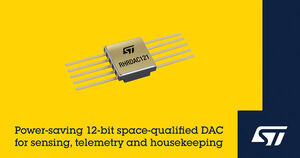
STMicroelectronics reveals 2.5V rad-hard digital-to-analog converter for next-generation satellite applications
"The STMicroelectronics RHRDAC121 radiation-hardened digital-to-analog converter (DAC) operates down to 2.5V for use in modern, low-power system designs that older 3.3V parts cannot support. Consuming just 0.6mW at its maximum speed and supply voltage, the 12-bit 1Msps successive-approximation register (SAR) DAC helps reduce size, weight, and power (SWaP) in next-generation satellites. Typically used in circuits for telemetry, housekeeping, and precision sensor-gain adjustment, its features include an SPI-compatible serial output, internal voltage reference, and automatic power-on-reset to zero-volt output. These ensure high precision with minimal external components, saving circuit complexity and board area. Maintaining stable performance parameters in harsh conditions up to 100krad(Si) total ionizing dose (TID), the RHRDAC121 is single-event latch-up (SEL) -free up to 125MeV.cm²/mg. It is characterized for single-event transient (SET) and single-event upset (SEU) and ready for immediate deployment with no further up-screening required." [...]

International Sea Level Satellite Takes Over From Predecessor
"Sentinel-6 Michael Freilich, the newest addition to a long line of ocean-monitoring satellites, becomes the reference satellite for sea level measurements. On March 22, the newest U.S.-European sea level satellite, named Sentinel-6 Michael Freilich, became the official reference satellite for global sea level measurements. This means that sea surface height data collected by other satellites will be compared to the information produced by Sentinel-6 Michael Freilich to ensure their accuracy. Launched from Vandenberg Air Force Base in November 2020, the satellite is continuing a nearly 30-year legacy started by the TOPEX/Poseidon satellite, which began its mission to measure sea surface height in the early 1990s. A series of successor satellites have carried on the effort since then, with Sentinel-6 Michael Freilich being the most recent. Its twin, Sentinel-6B, is slated to launch in 2025." [...]
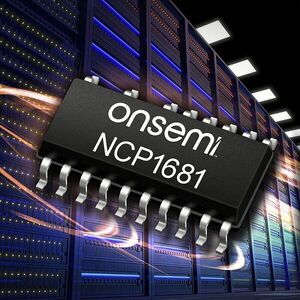
onsemi Unveils New High Power Totem Pole PFC Controller Meeting Challenging Efficiency Standard
"onsemi (Nasdaq: ON), a leader in intelligent power and sensing technologies, introduced its latest mixed-signal controller dedicated to bridgeless totem pole PFC (TP PFC) topology. The NCP1681 targets ultra-high density offline power supplies. Building upon the success of theNCP1680, which is suited for designs up to 350 W, the new controller extends the power capability into the kilowatt range. In the past, TP PFC designs required the use of an MCU that added design complexity and the need for coding. However, with the NCP1681, only a few external components and no coding is needed to be added for a fully-featured TP PFC solution, thereby saving time, cost and space. Commenting on the new release, Robert Tong, Senior Vice President & General Manager of Computing and Cloud Division at onsemi said “The new NCP1681 extends the benefits of code-free TP PFC design into higher power." [...]

Microchip Unveils Industry-Leading 3.3 kV Silicon Carbide (SiC) Power Devices Enabling New Levels of Efficiency and Reliability
"3.3 kV SiC MOSFETs and Schottky Barrier Diodes (SBDs) extend designers’ options for high-voltage power electronics in transportation, energy and industrial systems. System designers of traction power units (TPUs), auxiliary power units (APUs), solid-state transformers (SSTs), industrial motor drives and energy infrastructure solutions require high-voltage switching technology to increase efficiency, reduce system size and weight and enhance reliability. Microchip Technology Inc. (Nasdaq: MCHP) today announced the expansion of its SiC portfolio with the release of the industry’s lowest on-resistance [RDS(on)] 3.3 kV SiC MOSFETs and highest current-rated SiC SBDs available in the market, enabling designers to take advantage of ruggedness, reliability and performance. With the expansion of Microchip’s SiC portfolio, designers are equipped with the tools to develop smaller, lighter and more efficient solutions for electrified transportation, renewable energy, aerospace and industrial applications. Many silicon-based designs have reached their limits in efficiency improvements, system cost reduction and application innovation. While high-voltage SiC provides a proven alternative to achieve these results, until now, the availability of 3.3 kV SiC power devices was limited." [...]
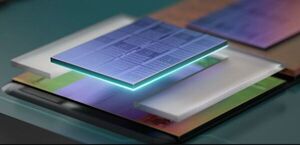
3rd Gen AMD EPYC Processors with AMD 3D V-Cache Technology Deliver Outstanding Leadership Performance in Technical Computing Workloads
"AMD (NASDAQ: AMD) announced the general availability of the world’s first data center CPU using 3D die stacking, the 3rd Gen AMD EPYC™ processors with AMD 3D V-Cache™ technology, formerly codenamed “Milan-X.” Built on the “Zen 3” core architecture, these processors expand the 3rd Gen EPYC CPU family and can deliver up to 66 percent performance uplift across a variety of targeted technical computing workloads versus comparable, non-stacked 3rd Gen AMD EPYC processors. These new processors feature the industry’s largest L3 cache,3 delivering the same socket, software compatibility and modern security features as 3rd Gen EPYC CPUs while providing outstanding performance for technical computing workloads such as computational fluid dynamics (CFD), finite element analysis (FEA), electronic design automation (EDA) and structural analysis. These workloads are critical design tools for companies that must model the complexities of the physical world to create simulations that test and validate engineering designs for some of the world’s most innovate products. “Building upon our momentum in the data center as well as our history of industry-firsts, 3rd Gen AMD EPYC processors with AMD 3D V-Cache technology showcase our leadership design and packaging technology enabling us to offer the industry’s first workload-tailored server processor with 3D die stacking technology,” said Dan McNamara, senior vice president and general manager, Server Business Unit, AMD. “Our latest processors with AMD 3D V-Cache technology provide breakthrough performance for mission-critical technical computing workloads leading to better designed products and faster time to market.” “Customers’ increased adoption of data-rich applications requires a new approach to data center infrastructure. Micron and AMD share a vision of delivering full capability of leading DDR5 memory to high-performance data center platforms,” said Raj Hazra, senior vice president and general manager of the Compute and Networking Business Unit at Micron." [...]
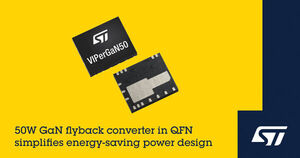
STMicroelectronics’ 50W GaN converter enables high-efficiency power designs in consumer and industrial applications
"The STMicroelectronics VIPerGaN50 simplifies building single-switch flyback converters up to 50 Watts and integrates a 650V gallium-nitride (GaN) power transistor for superior energy efficiency and miniaturization. With its single-switch topology and high integration, including current-sensing and protection circuitry also built-in, the VIPerGaN50 comes in a compact and low-cost 5mm x 6mm package. The speed of the integrated GaN transistor allows a high switching frequency with a small and lightweight flyback transformer. Minimal additional external components are needed to design an advanced, high-efficiency switched-mode power supply (SMPS). The VIPerGaN50 helps designers leverage GaN wide-bandgap technology to meet increasingly stringent ecodesign codes that target global energy savings and net-zero carbon emissions. It is suited to consumer and industrial applications such as power adapters, USB-PD chargers, and power supplies for home appliances, air conditioners, LED-lighting equipment, and smart meters." [...]

Intel Introduces New ATX PSU Specifications
"Intel has published the most significant update to industry power supply specifications since the initial ATX 2.0 specs were introduced in 2003. Updated ATX 3.0 specifications unlock the full power and potential of next-generation hardware and upcoming components built for technologies like PCIe Gen 5.0. Intel has also revised its ATX12VO spec to provide the PC industry with an updated blueprint for designing power supply units (PSUs) and motherboards that reduce power draw at idle, helping customers lower electrical demand. Key new additions to the ATX 3.0 / ATX12VO 2.0 specifications include: - A new 12VHPWR connector will power most, if not all, future PCIe 5.0 desktop Add-in cards (e.g., graphics cards). This new connector provides up to 600 watts directly to any PCIe 5.0 Add-in/graphics card. It also includes sideband signals that will allow the power supply to communicate the power limit it can provide to any PCIe 5.0 graphic card." [...]

Gravity could solve renewable energy's biggest problem
"In the Swiss municipality of Arbedo-Castione, a 70-meter crane stands tall. Six arms protrude from the top, hoisting giant blocks into the sky. But these aren't building blocks, and the crane isn't being used for construction. The steel tower is a giant mechanical energy storage system, designed by American-Swiss startup Energy Vault, that relies on gravity and 35-ton bricks to store and release energy. When power demand is low, the crane uses surplus electricity from the Swiss grid to raise the bricks and stack them at the top. When power demand rises, the bricks are lowered, releasing kinetic energy back to the grid." [...]
Ciência e Tecnologia
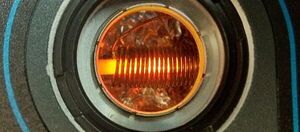
New world record for qubit storage
"A UNIGE team has succeeded in storing a quantum bit for 20 milliseconds. A duration that had never before been achieved by a solid-state quantum memory. Computers, smartphones, GPS: quantum physics has enabled many technological advances. It is now opening up new fields of research in cryptography (the art of coding messages) with the aim of developing ultra-secure telecommunications networks. There is one obstacle, however: after a few hundred kilometers within an optical fiber, the photons that carry the qubits or ‘quantum bits’ (the information) disappear. They therefore need ‘repeaters’, a kind of ‘relay’, which are partly based on a quantum memory." [...]
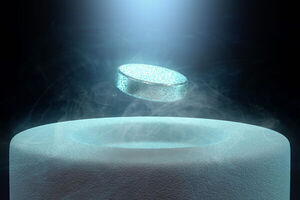
Scientists Uncover Surprising New Clues to Exotic Superconductors’ Superpowers
"Study leverages one of the most powerful magnets on Earth to probe a new model of a mysterious metal. A research team has uncovered new clues into the exotic behavior of unconventional superconductors – devices that efficiently carry electrical current with zero resistance in ways that defy our previous understanding of physics. “The hope is that our work may lead to a better understanding of superconductivity, which could find applications in next-gen energy storage, supercomputing, and magnetic levitation trains,” said first author Nikola Maksimovic, a graduate student researcher in Berkeley Lab’s Materials Sciences Division and UC Berkeley’s Physics Department. The work could also help researchers design more powerful superconducting materials by tuning their chemical makeup at the atomic level. The team, led by Lawrence Berkeley National Laboratory (Berkeley Lab) in collaboration with UC Berkeley, reported their findings in the journal Science. Conventional superconducting materials like lead or tin become superconducting at temperatures close to zero on the Kelvin scale, or minus 523.4 degrees Fahrenheit." [...]

Printing circuits on rare nanomagnets puts a new spin on computing
"New research artificially creating a rare form of matter known as spin glass could spark a new paradigm in artificial intelligence by allowing algorithms to be directly printed as physical hardware. The unusual properties of spin glass enable a form of AI that can recognize objects from partial images much like the brain does and show promise for low-power computing, among other intriguing capabilities. “Our work accomplished the first experimental realization of an artificial spin glass consisting of nanomagnets arranged to replicate a neural network,” said Michael Saccone, a post-doctoral researcher in theoretical physics at Los Alamos National Laboratory and lead author of the new paper in Nature Physics. “Our paper lays the groundwork we need to use these physical systems practically.” Spin glasses are a way to think about material structure mathematically. Being free, for the first time, to tweak the interaction within these systems using electron-beam lithography makes it possible to represent a variety of computing problems in spin-glass networks, Saccone said. At the intersection of engineered materials and computation, spin-glass systems are a type of disordered system of nanomagnets arising from random interactions and competition between two types of magnetic order in the material." [...]
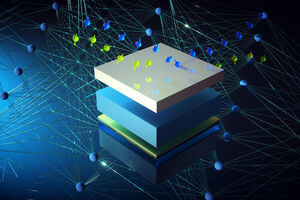
Seeing an elusive magnetic effect through the lens of machine learning
"An MIT team incorporates AI to facilitate the detection of an intriguing materials phenomenon that can lead to electronics without energy dissipation. Superconductors have long been considered the principal approach for realizing electronics without resistivity. In the past decade, a new family of quantum materials, “topological materials,” has offered an alternative but promising means for achieving electronics without energy dissipation (or loss). Compared to superconductors, topological materials provide a few advantages, such as robustness against disturbances. To attain the dissipationless electronic states, one key route is the so-called “magnetic proximity effect,” which occurs when magnetism penetrates slightly into the surface of a topological material. However, observing the proximity effect has been challenging." [...]

Chasing the world’s first Brain-on-Chip AI computer
"The new project BayesBrain aims to build the world’s first computer that combines brain cells and silicon microchips. Besides being the most intelligent computing system ever, the brain is also very energy efficient. It uses orders of magnitude less energy than traditional computers, which makes it attractive for future sustainable computing hardware. TU/e researchers led by Regina Luttge and Bert de Vries recognize the revolutionary potential for a hybrid computer consisting of brain cells and silicon microchips, which could be used to solve real world problems such as low-power wearables, IoT devices, and advanced controllers for AI technologies. The office walls of TU/e researchers Regina Luttge (Mechanical Engineering) and Bert de Vries (Electrical Engineering) are adorned by art. Hanging over Luttge’s desk is a colorful piece that she painted herself, while in De Vries’ office there’s a painting of a man with a mathematical formula in the top-left hand corner." [...]

Things are heating up for superconductors
"Researchers at LiU have, by way of a number of theoretical calculations, shown that magnesium diboride becomes superconductive at a higher temperature when it is stretched. The discovery is a big step toward finding superconductive materials that are useful in real-world situations. “Magnesiumdiboride or MgB2 is an interesting material. It’s a hard material that is used for instance in aircraft production and normally it becomes superconductive at a relatively high temperature, 39 K, or -234 C°”, says Erik Johansson, who recently completed his doctorate at the Division of Theoretical Physics. Erik Johansson is also principal author of an article published in the Journal of Applied Physics that have attracted broad attention. The results have been identified by the editor as particularly important for the future." [...]
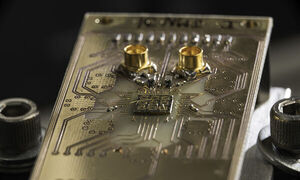
Researchers continue to confront major hurdles in quantum computing
"With new insights on the problem of noise in quantum computing, Rochester researchers make major strides in improving the transfer of information in quantum systems. Quantum science has the potential to revolutionize modern technology with more efficient computers, communication, and sensing devices. But challenges remain in achieving these technological goals, especially when it comes to effectively transferring information in quantum systems. A regular computer consists of billions of transistors, called bits. Quantum computers, on the other hand, are based on quantum bits, also known as qubits, which can be made from a single electron. Unlike ordinary transistors, which can be either “0” (off) or “1” (on), qubits are governed by the laws of quantum mechanics and can be both “0” and “1” at the same time." [...]
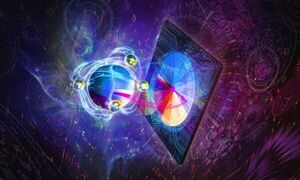
Quantum sensors: Measuring even more precisely
"Two teams of physicists led by Peter Zoller and Thomas Monz have designed the first programmable quantum sensor, and tested it in the laboratory. To do so they applied techniques from quantum information processing to a measurement problem. The innovative method promises quantum sensors whose precision reaches close to the limit set by the laws of nature. Atomic clocks are the best sensors mankind has ever built. Today, they can be found in national standards institutes or satellites of navigation systems. Scientists all over the world are working to further optimize the precision of these clocks." [...]
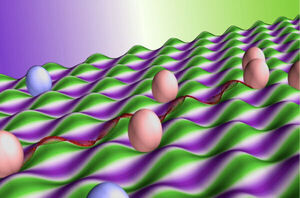
Don’t underestimate undulating graphene
"Lay some graphene down on a wavy surface, and you’ll get a guide to one possible future of two-dimensional electronics. Rice University scientists put forth the idea that growing atom-thick graphene on a gently textured surface creates peaks and valleys in the sheets that turn them into “pseudo-electromagnetic” devices. The channels create their own minute but detectable magnetic fields. According to a study by materials theorist Boris Yakobson, alumnus Henry Yu and research scientist Alex Kutana at Rice’s George R. Brown School of Engineering, these could facilitate nanoscale optical devices like converging lenses or collimators. Their study appears in the American Chemical Society’s Nano Letters. They also promise a way to achieve a Hall effect — a voltage difference across the strongly conducting graphene — that could facilitate valleytronics applications that manipulate how electrons are trapped in “valleys” in an electronic band structure." [...]

Making quantum circuits more robust
"Researchers have developed a technique for making quantum computing more resilient to noise, which boosts performance. Quantum computing continues to advance at a rapid pace, but one challenge that holds the field back is mitigating the noise that plagues quantum machines. This leads to much higher error rates compared to classical computers. This noise is often caused by imperfect control signals, interference from the environment, and unwanted interactions between qubits, which are the building blocks of a quantum computer. Performing computations on a quantum computer involves a “quantum circuit,” which is a series of operations called quantum gates. These quantum gates, which are mapped to the individual qubits, change the quantum states of certain qubits, which then perform the calculations to solve a problem." [...]

Photonic Technology Enables Real-Time Calculation of Radio Signal Correlation
"Light-based approach can be used to locate phones and other signal-emitting devices, outperforms digital methods Researchers have developed a new analog photonic correlator that can be used to locate an object transmitting a radio signal. Because the new correlator is faster than other methods and works with a wide range of radio frequency signals, it could be useful for locating cell phones, signal jammers or a variety of tracking tags. “The photonic architecture we developed uses no moving parts and enables real-time signal processing,” said Hugues Guillet de Chatellus from Université Grenoble Alpes-CNRS in France. “Real-time processing helps ensure there isn’t any downtime, which is critical for defense applications, for example.” In Optica, Optica Publishing Group’s journal for high-impact research, Guillet de Chatellus and colleagues describe the new photonic correlator and demonstrate its ability to identify the location of a radio frequency transmitter. The device is considerably simpler than today’s analog or digital correlators and uses off-the-shelf telecommunications components. “Many of today’s radio signals have large bandwidths because they carry a great deal of information,” said Guillet de Chatellus." [...]

Single-Photon Source Paves the Way for Practical Quantum Encryption
"Researchers have developed a new high-purity single-photon source that can operate at room temperature. The source is an important step toward practical applications of quantum technology, such as highly secure communication based on quantum key distribution (QKD). “We developed an on-demand way to generate photons with high purity in a scalable and portable system that operates at room temperature,” said Helen Zeng, a member of the research team from the University of Technology Sydney in Australia. “Our single-photon source could advance the development of practical QKD systems and can be integrated into a variety of real-world quantum photonic applications.” In the Optica Publishing Group journal Optics Letters, Zeng and colleagues from Australia’s University of New South Wales and Macquarie University describe their new single-photon source and show that it can produce over ten million single photons per second at room temperature. They also incorporated the single-photon source into a fully portable device that can perform QKD. The new single-photon source uniquely combines a 2D material called hexagonal boron nitride with an optical component known as a hemispherical solid immersion lens, which increases the source’s efficiency by a factor of six." [...]

Quenching by laser increases graphene quality
"Russian scientists have found out why, instead of simply burning down at high temperatures, graphene oxide opens the door to a promising and inexpensive graphene production method. The research was published in the journal Carbon. It has been over a decade since the Nobel Prize was awarded for graphene experimental research, but scientists still have not found a way to obtain high-quality large-area graphene, which would be cheap, efficient and scalable for industrial needs. Graphene reduction from graphene oxide by laser irradiation appears as a promising route: with graphene oxide produced from ordinary graphite using chemical methods, the laser-aided reduction technique holds much promise in terms of cost and controllability of the resulting material quality. A few years ago, a group of Skoltech researchers discovered that heating graphene oxide to 3300-3800 K, even under atmospheric conditions, can produce graphene of fairly high quality. “The result came as a big surprise for our colleagues: the temperature was very high, yet they obtained well-structured material." [...]

New technology to make charging electric cars as fast as pumping gas
"Whether it's photovoltaics or fusion, sooner or later, human civilization must turn to renewable energies. This is deemed inevitable considering the ever-growing energy demands of humanity and the finite nature of fossil fuels. As such, much research has been pursued in order to develop alternative sources of energy, most of which utilize electricity as the main energy carrier. The extensive R&D in renewables has been accompanied by gradual societal changes as the world adopted new products and devices running on renewables. The most striking change as of recently is the rapid adoption of electric vehicles. While they were hardly seen on the roads even 10 years ago, now millions of electric cars are being sold annually." [...]
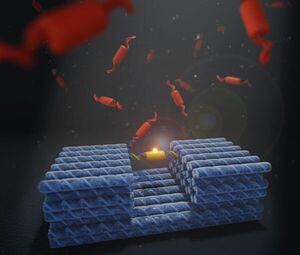
Autonomous nanomachines inspired by nature
"Inspired by the way molecules interact in nature, UNSW medical researchers engineer versatile nanoscale machines to enable greater functional range. To withstand the challenging conditions within living organisms, molecular machines need to be durably constructed for continuous operation over long periods. At the same time, they need to adapt to different needs and to their changing environment by quickly swapping out molecular components to reconfigure the machinery. A team, led by A/Prof. Lawrence Lee of UNSW Medicine & Health’s EMBL Australia Node in Single Molecule Science, reports how they designed and built rapid exchange molecular machines with stability in the journal ACS Nano. “We adopted a synthetic biology approach to this problem by constructing an artificial nanoscopic machine using DNA and protein components." [...]
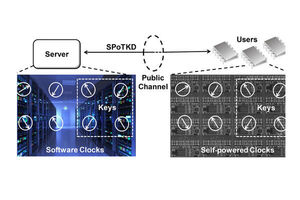
Tiny, cheap solution for quantum-secure encryption
"It’s fairly reasonable to assume that an encrypted email can’t be seen by prying eyes. That’s because in order to break through most of the encryption systems we use on a day-to-day basis, unless you are the intended recipient, you’d need the answer to a mathematical problem that’s nearly impossible for a computer to solve in a reasonable amount of time. Nearly impossible for modern-day computers, at least. “If quantum computing becomes a reality, however, some of those problems are not hard anymore,” said Shantanu Chakrabartty, the Clifford W. Murphy Professor and vice dean for research and graduate education in the Preston M. Green Department of Electrical & Systems Engineering at the McKelvey School of Engineering. Already these new computing paradigms are becoming a reality and could soon be deployable. Hackers are already preparing by storing encrypted transactions now with the expectation they can decipher the information later." [...]
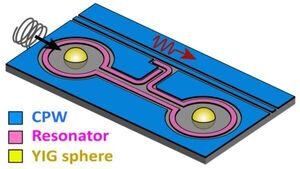
Tiny magnets could hold the secret to new quantum computers
"Magnetic interactions could point to miniaturizable quantum devices. From MRI machines to computer hard disk storage, magnetism has played a role in pivotal discoveries that reshape our society. In the new field of quantum computing, magnetic interactions could play a role in relaying quantum information. In new research from the U.S. Department of Energy’s (DOE) Argonne National Laboratory, scientists have achieved efficient quantum coupling between two distant magnetic devices, which can host a certain type of magnetic excitations called magnons. These excitations happen when an electric current generates a magnetic field. Coupling allows magnons to exchange energy and information." [...]
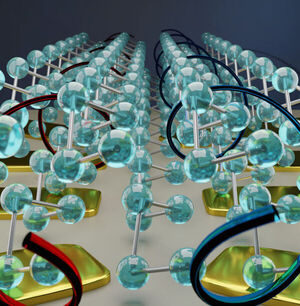
Magnet-Free Chiral Nanowires For Spintronic Devices
"Researchers from the Basque Nanoscience Research Center CIC nanoGUNE (San Sebastian, Spain), in collaboration with POLYMAT (San Sebastian, Spain), the Institute of Physics of the Martin Luther University Halle-Wittenberg and the Max Planck Institute of Microstructure Physics (both in Halle, Germany) demonstrate the all-electrical generation, manipulation, and detection of spin polarization in chiral single-crystalline Tellurium nanowires. The results, published in Nature Materials (DOI: 10.1038/s41563-022-01211-7), pave the way for the development of magnet-free chirality-based spintronic devices. Chiral materials are an ideal playground for exploring the relation between symmetry, relativistic effects, and electronic transport. For instance, chiral organic molecules have been intensively studied to electrically generate spin-polarized currents in the last decade, but their poor electronic conductivity limits their potential for applications. Conversely, chiral inorganic materials such as Tellurium have excellent electrical conductivity, but their potential for enabling the electrical control of spin polarization in devices remains unclear. In this recently publish work, it was shown that the orientation of the electrically generated spin polarization is determined by the nanowire handedness and uniquely follows the current direction, while its magnitude can be manipulated by an electrostatic gate." [...]

New technology enables the detection of microplastics from road wear
"A new study shows that a form of optical tweezers can be used to detect small microplastics from tires and road wear, that previously has been too small to detect. The results can be used to develop more sustainable tires that produce less pollution. Tire and road wear particles are very small microplastics generated by road transport means during the mechanical abrasion of tires, brakes, and roads. The particles are accumulated on the roadsides and then run off into watercourses where they pollute the water ecosystem. Whilst the amount of pollution from larger microplastics is known, there has been a technological gap in the detection and analysis of the fraction of these smaller particles. In a new study, by using a combination of optical tweezers and Raman spectroscopy called Raman tweezers, researchers have for the first time been able to detect and examine particles from tires and roads less than five micrometre in size." [...]
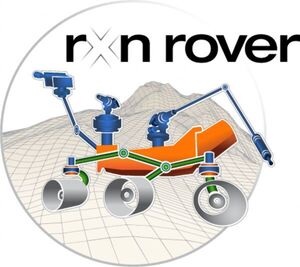
Rxn Rover software helps small chem labs easily access AI for reaction optimization
"A team of experts at the U.S. Department of Energy’s Ames Laboratory has released a new open-source software program called Rxn Rover. It is designed to help chemistry researchers easily and affordably tap into the capabilities of artificial intelligence (AI) to automate chemical reaction optimization and discovery, speeding the discovery and deployment of new technologies. Process automation is not new, and chemical industries have made big leaps in the last decade using machine learning to aid the discovery and optimization of new chemical reactions and compounds, particularly in the pharmaceutical industry. But the software and hardware systems used to accomplish these tasks are often extremely specialized, expensive, and frequently out of reach for many academic research groups and small R&D labs. “People know that AI is the future, but there is a big gap between that and figuring out how to execute it in fundamental and even applied research,” said Long Qi, a scientist in the Division of Chemical and Biological Sciences at Ames Lab. “We developed Rxn Rover to attempt to bridge that gap, by providing an inexpensive, open-source, highly adaptable way to discover and optimize chemical reactions.” Kevin Basemann, previously a graduate student at Ames Laboratory and Iowa State University, and now a postdoctoral research associate at the University of North Carolina at Chapel Hill, pitched the idea to couple AI with a chemical reactor to automate reactions." [...]

Enhancing the electromechanical behavior of a flexible polymer
"Piezoelectric materials convert mechanical stress into electricity, or vice versa, and can be useful in sensors, actuators and many other applications. But implementing piezoelectrics in polymers — materials composed of molecular chains and commonly used in plastics, drugs and more — can be difficult, according to Qiming Zhang, distinguished professor of electrical engineering. Zhang and a Penn State-led team of interdisciplinary researchers developed a polymer with robust piezoelectric effectiveness, resulting in 60% more efficient electricity generation than previous iterations. They published their results today (Mar. 25) in Science . “Historically, the electromechanics coupling of polymers has been very low,” Zhang said." [...]

How to predict and manage EV charging growth to keep electricity grids reliable and affordable
"One day, the demand for electricity to charge electric vehicles may overwhelm the power grid, unless the electricity sector is prepared for the challenge. With a growing fleet of EVs on the road, grid planners depend on accurate estimates of charging patterns to calculate electricity demand. A team of researchers at Stanford University assembled a scalable probabilistic model for charging demand that can be applied to a flexible array of populations and account for a wide range of factors. Within California, the model found that by 2030 – in a scenario where most EV owners opt to charge their vehicles when they get home every evening – peak charging demand would be more than twice as high as if drivers charged throughout the day at home, work and public stations. By 2030, EV charging will comprise a significant proportion of electricity demand in advanced economies, so keeping peak demand as low as possible would curb the need for new generators and transmission lines. “We wanted to create a model framework for long-term planning that captures real drivers’ charging patterns and accounts for uncertainty,” said Ram Rajagopal, senior author of the study, which was published in the March 1 edition of Applied Energy, Rajagopal is an associate professor in Stanford’s Department of Civil & Environmental Engineering." [...]
Documentação
A documentação é parte essencial do processo de aprendizagem e a Internet além de artigos interessantes de explorar também tem alguma documentação em formato PDF interessante de ler. Todos os links aqui apresentados são para conteúdo disponibilizado livremente pelo editor do livro.
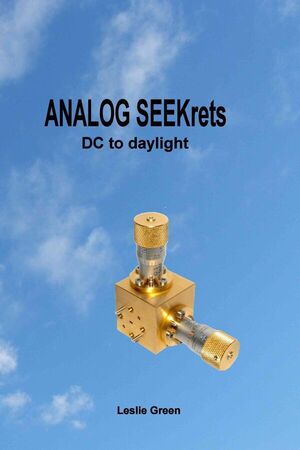
ANALOG SEEKrets
"This is a book on antenna theory for those who missed out on the RF design course. It is a book on microwave theory for those who mainly use microwaves to cook TV dinners. It is a book on electromagnetic theory for those who can’t confront electromagnetics textbooks. In short, it is a book for senior under-graduates or junior design engineers who want to broaden their horizons on their way to becoming ‘expert’ in the field of electronics design. This book is a wide-ranging exploration of many aspects of both circuit and system design. " [...]
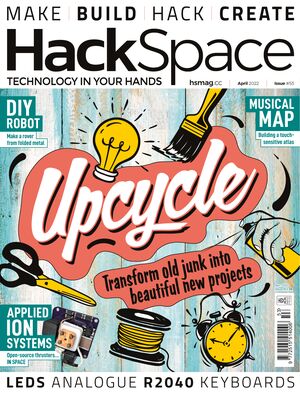
HackSpace magazine #53
"Things fall apart, the centre cannot hold. That’s why repair skills are so important! This month we’re talking upcycling — the art of making beautiful new projects out of old junk. Plus: what happens when your just-for-kicks project turns out to be something that loads of people want? We talk to Timon Skerutsch, creator of the Piunora, to find out. And can you use open source technology to keep satellites in orbit?" [...]
Projetos Maker
Diversos Projetos interessantes.
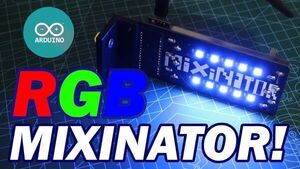
RGB Mixinator V2
"DIY Color Mixer that uses an Arduino Nano with few WS2812B LEDs Mixinator is essentially an RGB Studio Light that contains 10 WS2812B LEDs controlled via three Sliding Pots. we can control the color output by changing the sliding Pot position. MATERIAL REQUIRED I used the following things in this project- - WS2812B LEDs x10 - 100nF Capacitor 0805 Package x10 - Female header Pin for Arduino nano - SIDE POTs x3 - Custom PCB (that was provided by PCBWAY) - 3D Printed Holder for ENDER 3" [...]

ATtiny85 Snake Game
"When it comes to electronics, it's the free-form designed ones that always catch my eye. Seeing how all the wires and components are connected just make it so fascinating and nice to look at. I wanted to try building something in a similar style. Being aware my soldering skills are not as good as I'd like them to be, I decided to go for a bit easier but still kind of nice-looking option. The whole build was a process of trial and error that probably cost me a bit more time than I'd like to admit. It was also the first time I ever used a ATtiny (or anything besides an Arduino Uno), which posed many challenges." [...]

Matrix Game Console
"A generic 32k Flash, 2k RAM Game Console with an 8x8 Red/Green LED matrix, Speaker, X-Pad and 3 support buttons. One of the first computer games that I remember playing on my TRS80 clone was a game called Othello. I won't go into the game here other than to say that it is a two player game played on a 8x8 grid. Each player has a different colored disc. So my first task was to create a game console that I would ultimately code Othello on. The game lends itself to a two color 8x8 matrix so that was an easy choice for the display." [...]
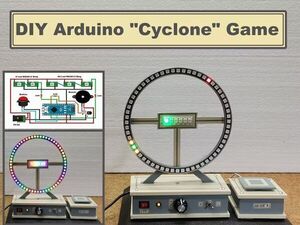
DIY Arduino Cyclone Game with WS2812B Led Ring
"Based on the arcade game called Cyclone, where the player tries to stop an led scrolling around a circle at a specific spot This time I will show you how to make an interesting game that is based on the arcade game called Cyclone, where the player tries to stop an led scrolling around a circle at a specific spot. The goal of the game is to stop the cycling light when it reaches the indicated (red) LED. If successful, the difficulty level will increase. If unsuccessful, the Game will restart. The ring consists of 60 LEDs (4 Quarter circle neopixels of 15 Leds). The ring holder is made with a 3D printer and you can download the.stl file below." [...]
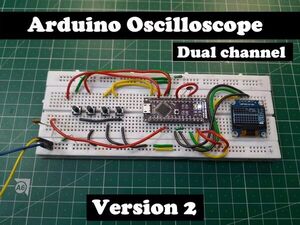
Arduino based Dual channel Oscilloscope
"It is like a mini atom bomb, In a piece of single code you will get a lot of features and I fully respect the effort of the owner. I made 2 different oscilloscope and these are featured on this platform. And now I came up with an idea of dual channel oscilloscope. This one has main microcontroller as Arduino and 1.3” OLED display. This time I also have battery operating options and onboard charging circuit also. You can make this on breadboard first and then go with my PCB layouts given below." [...]
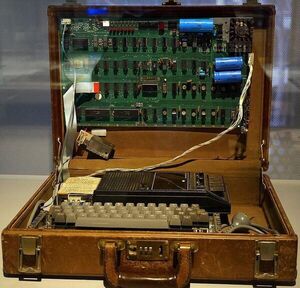
Inside the Apple-1's unusual MOS clock driver chip
"Apple's first product was the Apple-1 computer, introduced in 1976. This early microcomputer used an unusual type of storage for its display: shift register memory. Instead of storing data in RAM (random-access memory), it was stored in a 1024-position shift register. You put a bit into the shift register and 1024 clock cycles later, the bit pops out the other end. Since a shift-register memory didn't require addressing circuitry, it could be manufactured more cheaply than a random-access memory chip.1 The downside, of course, is that you had to use bits as they became available, rather than access arbitrary memory locations. The behavior of shift-register memory was a good match for video circuitry, though, since characters are displayed on the screen in a fixed, repeating order (left to right and top to bottom)." [...]
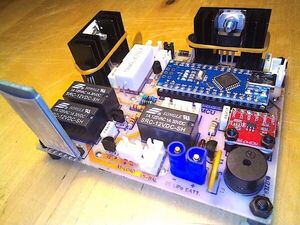
Li.Po. Battery charger with BT Telemetry
"For 2s1p (7.4V) battery packs, it does balancing, ready for a load circuit. I would introduce to you this charger for Lithium Polymers (Li.Po.) batteries. It does support 2s1p battery packs, two 3.7V elements in series, 7.4V in total. The charger does balancing, it means it recharges a single element at a time to have a better final result. Something about Li.Po." [...]
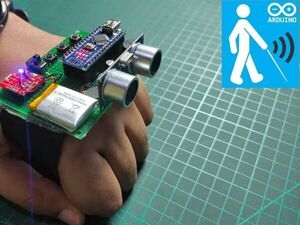
Third Eye for The Blind Person
"How to Make Third Eye for The Blind Person using Arduino and Ultrasonic Sensor | Smart blind Stick" [...]
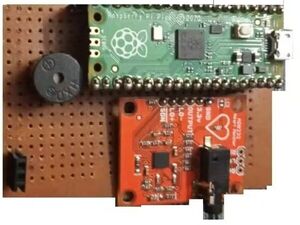
Cognitive Stress Detector
"A portable device to detect and alert a person if he/she is experiencing mental stress. Mental health is one of the biggest concerns of today's world. As the lives of people are getting busier, daily stress is something that is common like daily breakfast. Though stress has become so common in daily life, still it has some adverse effects on both physical and mental health. Studies shows the effects of prolonged stress can range from cardiovascular diseases, high blood-pressure, diabetes, as well as mental problems like anxiety, depression and bi-polarity disorder. Even with such adverse effects, it is very hard to understand if anyone is experiencing extensive stress for a prolonged period of time." [...]

Arduino Text LCD Display & Receive Infrared Remote Code
"Use LCD Screen to Display Received Code through Remote on LCD and assign Different Character. ntroduction In this project I will show you how to Decode IR Remote Control Signals' of any Remote using Arduino and Display Code on LCD. You can assign different-different remote button and show different-different character on LCD The remotes which we use in our home are basically made of IR transmissions for example TV remote, DVD remote, Sound System remote etc. But these signals never interfere with each other because every key in the remote control has unique operation code in Hexadecimal format. By decoding these signals we can know what is the unique code of the key. By knowing the codes we can implement several applications where we can control with same remote." [...]
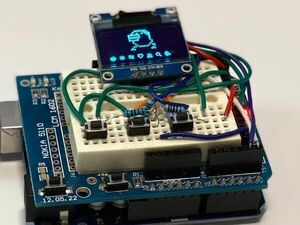
A real Tamagotchi emulator for Arduino UNO
"A real Tamagotchi emulator for Arduino UNO ArduinoGotchi is a real Tamagotchi P1 emulator running in Arduino UNO hardware. The emulation core is based on TamaLib with intensive optimization to make it fit into UNO's hardware that only comes with 32K Flash 2K RAM. " [...]
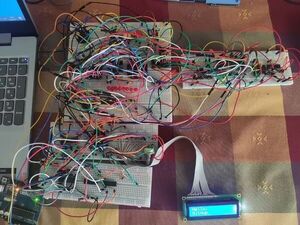
8085 homebrew computer
"A custom pc based on 8085 with custom assembler and EEPROM programmer. This project consist of an assembler project written in Python in order to translate the assembly code into machine code recognizable from the 8085 microprocessor, acustom EEPROM writer using Raspberry Pi pico and microPython, custom Arduino script to send ASCII codes to the CPU using the laptop keyboard and the PC construction itself. " [...]

Macropad for Keyboard Shortcuts
"We're making a small macro keypad for some keyboard shortcuts. In this case, it is for Zoom video conferencing shortcuts for Windows. We'll program the keys to toggle mute/unmute microphone, raise/lower hand, and video on/off. The board we're using to run this is a clone of an Arduino Pro Micro. You can use the official one, or a cheaper clone like I am. The important thing is that it is an atmega32u4 chip that is running it, so that you have native USB support." [...]
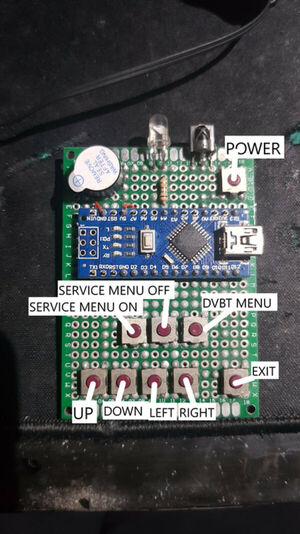
Samsung TV Remote Service
"If you are a TV technician this project cannot be missing among your repair tools. I made an infrared remote control with arduino nano that allows you to send 3SPEED and Factory codes (and many others to choose from!) To unlock the darkened options on the service menus of samsung televisions. It is very useful all those times that, due to the impossibility of repairing a motherboard, we order a new one from external countries and we need to change the language. Furthermore, you can access the service menu by pressing just one button and navigate normally without making any combinations. The remote control is also equipped with an infrared receiver to acquire and record new codes from original Samsung remote controls (via serial monitor on the Arduino IDE, later I will insert the possibility to register codes without the need for a computer)." [...]
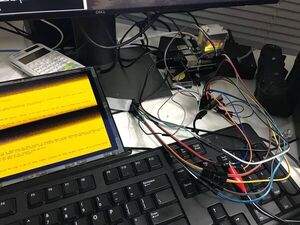
Driving TFEL with RP2040: Offloading the CPU step by step
"I recently bought few Plannar EL640.480-AM series panels. They are monochrome 10.4" 640x480 TFEL panels with an STN LCD interface. It is similar to DPI (sometimes called RGB), the screen is timed with HVSync signals, and needs to be continuously refreshed. But, as a monochrome screen, the pixel is 1bpp, so the data bus transmits multiple pixels at a time. These screens are also dual-scan: there are two "raster beams" at the same time, one refresh from the top of the screen, the other one refreshes from the middle of the screen. They are supposed to be refreshed at 120 Hz." [...]
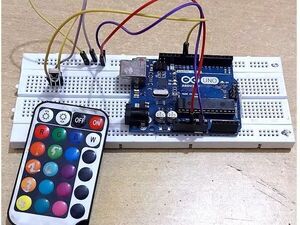
Decode IR Remote Control Signals of any Remote Using Arduino
"In this project you will be going to decode the signal sent by any type of Remote to make Projects Introduction In this project I will show you how to Decode IR Remote Control Signals' of any Remote using Arduino. The remotes which we use in our home are basically made of IR transmissions for example TV remote, DVD remote, Sound System remote etc. But these signals never interfere with each other because every key in the remote control has unique operation code in Hexadecimal format. By decoding these signals we can know what is the unique code of the key. By knowing the codes we can implement several applications where we can control with same remote. Working on Basics IR remote has a button and a microcontroller with IR LED attached." [...]
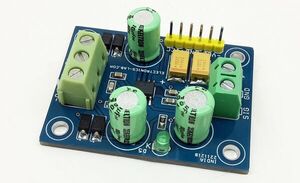
Audio Line Driver using DRV135 with Balanced Output
"The project presented here is a differential output amplifier that converts a single-ended audio signal input to a balanced output pair. This balanced audio project consists of high-performance OPAMPS with on-chip precision resistors. They are fully specified for high-performance audio applications and have excellent AC specifications, including low distortion (0.0005% at 1 kHz) and high slew rate (15 V/µs). The board is based on DRV135 from Texas Instruments. The on-chip resistors are laser-trimmed for accurate gain and optimum output common-mode rejection. Wide output voltage swing and high output drive capability allow use in a wide variety of demanding applications." [...]

OctoPrint Tracer
"This plugin intends to enable direct generation of toolpaths from physical line following. This is illustrated in this. This could be useful in cases where the object is not originating from a CAD drawing, but is coming from a physical object, like cutting a piece to fit into an existing odd-shaped hole. Installation This has only been tested on OctoPi. It has only been tested with the latest version of OctoPrint. It might work on earlier versions based on Python 3, but the odds are low that it would work on Python 2." [...]
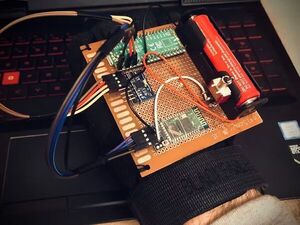
Gesture Glove
"Gesture recognition using RPI Pico and Edge Impulse machine learning, maps gestures to shortcuts I've always been interested in wearable tech, add to that some iron man level tech fantasy, an interest in machine learning, and you have a glove that makes you look techy. " [...]
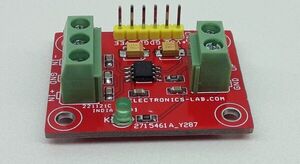
Audio Line Receiver using INA134
"The project described here is a differential line receiver consisting of high-performance INA134 OPAMPs with on-chip precision resistors. The project is fully specified for high-performance audio applications and has excellent AC specifications, including low distortion (0.0005% at 1kHz) and high slew rate (14V/µs), assuring good dynamic response. In addition, wide output voltage swing and high output drive capability allow use in a wide variety of demanding applications. The INA134 on-chip resistors are laser trimmed for accurate gain and optimum common-mode rejection. Furthermore, excellent TCR tracking of the resistors maintains gain accuracy and common-mode rejection over temperature. Operating power supply ±4V to ±18V (8V to 36V total supply)." [...]
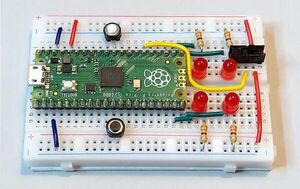
Build This Intruder Alarm Two Ways: Using 555 Timers or a Raspberry Pi
"This project is adapted from the staggeringly popular Make: Electronics Third Edition, which has been completely re-re-written with most photos and schematics replaced and updated! During 2021 I started writing a third edition of my book Make: Electronics. One of the pleasures of this task was that I could rethink all the circuits, and with the benefit of hindsight, I saw how to simplify one project in particular: The intrusion alarm. You’d think an alarm should be easy enough. Just place some sensors on doors and windows, wire them to a beeper, and — job done! But it’s not so simple." [...]
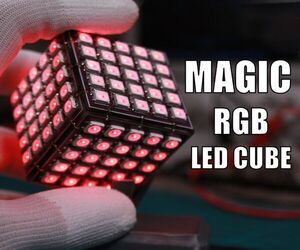
Glowing RGB LED Magic Cube (WS2812)
"I fully designed from scratch every single piece of this project to create a cool glowing Magic LED Cube, mainly made for light animation and basically could be explored for decoration of Electronics Labs. Designed around the awesome RP2040 Microcontroller and Built with a full of electronics passion All the used items are fully documented through this post and you have all the necessary files that you need to rebuild this project so just follow the steps. What you will learn here: - The basic circuit setup for RP2040 MCU - Some Electronics assembly tips - The advantage of use of WS28xx LEDs - Certainly you will get inspired from this project for more creativity The needed tools: - Solder Plate (You can use the Uyue 948S+ model) - Solder Iron - Low temperature Profile solder paste - Solder paste deposit spatula The needed software: - Altium designer as ECAD for PCB drawing - Solidworks as CAD for housing designing - Cura as slicer for 3D printing - Arduino IDE" [...]
Secção Videos
Videos interessantes.
That's all Folks!




